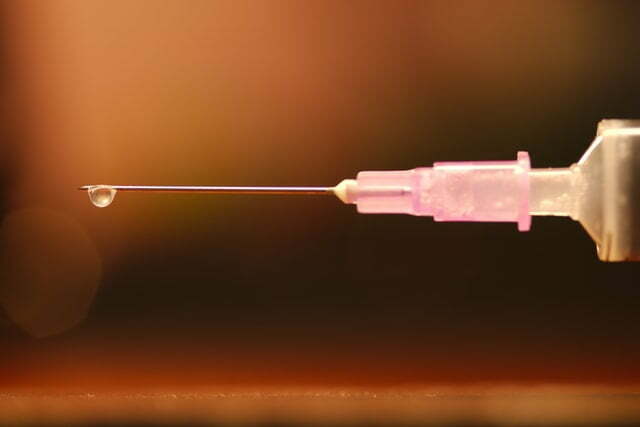- Home
- Addiction Treatment
- Dual Diagnosis
- Body Dysmorphia (BDD) And Addiction
Body Dysmorphia (BDD) And Addiction
Body dysmorphic disorder, also known as body dysmorphia, is a mental health condition centred around bodily appearance.
Despite these ‘flaws’ being unnoticed by others, the individual is constantly worried or displeased about them.
It is most common in young adults and affects people of all genders.
Causes And Signs

The causes of body dysmorphia are associated with a number of things, such as:
- Environments, such as bullying and negative comments.
- Psychological factors such as poor mental health.
- Biological factors, including a family history of body dysmorphia.
The specific symptoms of body dysmorphia are rather varied, but some of the most common signs include:
- Constantly checking that area in the mirror or avoiding mirrors altogether.
- Trying to hide your body, commonly under layers of clothing.
- Constantly exercising or trying to change.
- Comparing yourself to others you deem to be without flaw.
- Asking others whether you look good or not, and not believing them when they say yes.
- Avoiding social events or getting social anxiety.
- Feeling anxious or depressed, possibly contemplating suicide.
- Always looking on the internet for ways to fix it, such as cosmetic surgery.

The most common features that are obsessed about are:
- Face areas such as large noses or blemishes and birthmarks
- Hair thinning and baldness
- Cellulite, scars or skin appearance
- Breast size, which is also common in those that question their gender
- Muscle size
- Genital size and appearance
Having body dysmorphia can often cause low self-esteem and social isolation.
If you notice developing obsessive behaviour, using substances or picking up unusual habits of eating, make sure to check in on them.
Once someone becomes obsessively worried about a part of their body, they will likely develop compulsive behaviours and routines around it, aiming to deal with the way they think they look.
These feelings can vary across days, some days people forget about it, and some days people can’t leave their house.
Testing Your Dysmorphia And Addiction

If you’re reading this, either you or someone you know might be suffering from body dysmorphia.
A quick test is a first step in seeing how you feel about your body.
Please note this is not medical advice: if you are worried you should seek a doctor’s appointment.
- How often do you deliberately check your features? This isn’t accidentally catching sight of it, this includes mirrors, shop windows and feeling it with your hands.
- To what extent do you feel your features are ugly, unattractive, or ‘not right’?
- To what extent does it currently cause you a lot of distress and feeling of discomfort?
- How often do your features lead you to avoid social activities and situations?
- To what extent do your features currently preoccupy you, as in you cannot stop thinking about it?
- Does it have an effect on your current or previous relationships?
- To what extent does it interfere with your ability to work, study or your role as a homemaker?
- To what extent does your feature interfere with your social life such as parties and entertainment?
- To what extenr do you feel your appearance is the most important aspect of who you are?
The higher your score, the more likely you are to have BDD, with a maximum score of 72.
If you score above 40, it is recommended you seek an assessment.
CAGE

There are also known questionnaires regarding addiction to drugs and alcohol, the most common being the CAGE questionnaire for alcohol, and the CAGE-AID for drugs.
These are based on a yes (1) or no (0) basis, where a score of 2 or more is considered harmful, and you should seek help.
- Have you ever felt you should cut down on your drinking?
- Have people annoyed you by criticizing your drinking?
- Have you ever felt bad or guilty about your drinking?
- Have you ever had a drink first thing in the morning to steady your nerves or to get rid of a hangover (eye-opener)?
The CAGE-AID is the drug-adapted version of the CAGE Questionnaire:
- Have you ever felt you ought to cut down on your drug use?
- Have people annoyed you by criticizing your drug use?
- Have you felt bad or guilty about your drug use?
- Have you ever used drugs first thing in the morning to steady your nerves or to get rid of withdrawal symptoms (eye-opener)?
What Is The Link Between Body Dysmorphia And Addiction?

People with body dysmorphia tend to develop attachments to aspects of their appearance, becoming totally obsessed.
This can cause mental health issues if it isn’t addressed or treated properly.
This can result in a misuse of prescription medication or substances such as steroids in a desire to eradicate their ‘flaw’, becoming quickly addicted.
Like other mental health disorders, it has been questioned whether substances have caused the problem, or are a way to cope with the problem.
Developing Addiction

Hoping for an improvement in their physical bodies, many people take drugs to ease their discomfort or pain.
But this is where the addiction process begins.
When they see some relief, even if from a different source, they will abuse the substance in the false belief that it will relieve them of all their symptoms.
For example, it’s common for men to suffer from body dysmorphia about the size of their muscles.
They can take steroids and other drugs to enhance their muscle growth, quickly becoming an obsession when they see results.
However, no matter how much muscle they have, it will never be enough, because the problem itself is psychological rather than physical.
Trans Identity And Body Dysmorphia

Body dysmorphia can also be linked to gender dysphoria, connected to transgender and binary issues.
These image problems can come from feeling different on the inside.
For example, for biological women who do not identify as female, their breasts can become a problem for them.
They can also develop addictive eating disorders in an attempt to drastically change their bodies.
Body Dysmorphia And Society

Society can be a difficult place to live in -some areas are far less accepting of bodily change than others.
However, you can be your own worst enemy when it comes to your body.
All bodies are beautiful, no matter what people say.
Those suffering from body dysmorphia tend to abuse substances in an attempt to alleviate these feelings.
This aligns with their obsessive thoughts and compulsive behaviour that comes with this condition, often breaching into substance abuse.
The most commonly used substances are alcohol, cannabis and opiates, suggested for their feelings of relaxation and calm.
These effects are only temporary, and long-term use tends to exacerbate mental health issues.
Substance Abuse As A Cause Of Dysmorphia

Drug abuse can also cause body dysmorphia.
Despite not changing genetics, drugs can change the body and mind, and those who use regularly become emotionally and physically vulnerable to body dysmorphia.
- 50% of people with body dysmorphia have abused substances in their lifetime.
- 17% of people with body dysmorphia have an active SUD at the time they experience negative dysmorphia symptoms.
- 70% of people with a history of both SUD and body dysmorphia said that it was the dysmorphia that contributed to their substance disorder and addictions.
Is Body Image An Addiction Itself?

Body dysmorphia manifests as abnormal dissatisfaction with physical appearance.
Onset usually occurs before the age of 18 in over 70% of cases.
It’s estimated that over 50% of suffers seek medical help, either in the form of surgery or other treatment.
However, plastic surgery provides no overall remedy because the obsession still remains.
In some cases, the obsession can move to other places, because you have become used and addicted to being obsessed.
Dysmorphia can occasionally worsen with surgery and treatment, having a different outcome than what was intended.
Studies have shown that:
- 9% of people with BDD had a lifetime SUD
- 5% of BDD subjects had an alcohol dependency
- 17& of subjects were using substances currently
- 68% of subjects with a lifetime SUD stated that BDD contributed to their SUD
SUDs are common in those with BDD, also relating to sexuality, eating and impulsivity.
How To Help Addiction Sufferers

The key thing to start helping someone is talking to them.
There are multiple ways to help someone with addiction, starting with intervention.
In terms of addiction, an intervention is when concerned friends and family work with a professional interventionist to try and convince the addiction sufferer to seek help.
CRAFT

The CRAFT approach is a family-style intervention, which stands for the Community Reinforcement And Family Training approach.
Drafted in the 1970s by Meyers and Miller, the CRAFT approach is grounded in positive reinforcement and motivation.
The supporting family will be trained to positively reinforce pro-social and anti-using behaviour, whilst letting the negative consequences play out when they use the substance in question.
Support Groups

There are also community groups to get your loved one help.
If they struggle with alcohol and drugs, Alcoholics Anonymousor Narcotics Anonymous are great places to start.
Groups in the community are mutually supportive and create a safe space.
The AA follows the 12-step program, which has successfully helped individuals beat addiction for decades.
- We admitted we were powerless over alcohol – that our lives had become unmanageable.
- Came to believe that a “higher power” could restore us to sanity.
- Made a decision to turn our will and our lives over to the care of this higher power as we understand it.
- Made a searching and fearless moral inventory of ourselves.
- Admitting to this higher power, to ourselves and to another human being the exact nature of our wrongs.
- Were entirely ready to have this higher power remove all these defects of character.
- Humbly asked it to remove our shortcomings.
- Made a list of all persons we had harmed and became willing to make amends to them all.
- Made direct amends to such people wherever possible, except when to do so would injure them or others.
- Continued to take personal inventory and when we were wrong promptly admitted it.
- Sought through prayer and meditation to improve our conscious contact with this higher power, praying only for knowledge and the power to carry out our recoveru.
- Having had a spiritual awakening as the result of these steps, we tried to carry this message to alcoholics and to practice these principles in all our affairs.
Although these steps are religious in nature, the modern AA and its copycat groups are not religious organisations.
“Higher Power” can mean a lot of things to different people, and anyone is free to join.
Getting Help Today

Body Dysmorphia is a problem that can affect all aspects of an individual’s life.
From discomfort in one’s own skin to radically shifting behaviours, body dysmorphia can make us unrecognisable to those who love us.
When paired with a substance or behavioural addiction, this only gets worse.
Whatever combination of mental health issues and addiction you may be struggling with, we are here to help.
Call our free helpline today to begin your recovery journey.


